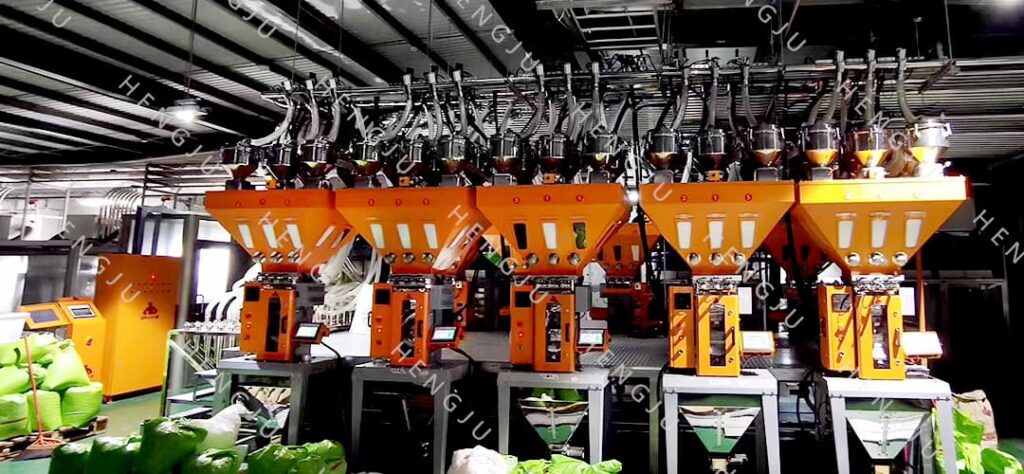Plastic gravimetric blenders had already achieved a high level of precision and control. However, it’s worth noting that advancements in technology are constantly being made, so it’s possible that there have been further developments since then.
Here are some advancements and trends that were prevalent in the development of plastic gravimetric blenders:
1.Improved Accuracy: Manufacturers of plastic gravimetric blenders have been working on enhancing the accuracy of the weighing mechanisms used in the blenders. This includes advancements in load cell technology, which are the sensors used to measure the weight of materials. Higher accuracy in measuring small variations in material weight allows for more precise blending and better control over material ratios.
2.Enhanced Control Systems: The control systems of plastic gravimetric blenders have seen significant advancements in recent years. These systems now offer more sophisticated algorithms for calculating material ratios and adjusting the feeding mechanisms in real-time. They can also integrate with other equipment in the production line, enabling seamless communication and synchronization.

3.Integration with Industry 4.0 Technologies: Plastic gravimetric blenders are increasingly being integrated into the concept of Industry 4.0, which involves the integration of automation, data exchange, and smart technologies in manufacturing. This integration allows for better data collection, analysis, and optimization of blending processes. It also enables remote monitoring and control of blenders, improving efficiency and reducing downtime.
4.Connectivity and Data Management: Plastic gravimetric blenders are being equipped with connectivity options such as Ethernet or Wi-Fi, allowing them to be connected to a central monitoring system. This enables real-time data collection, analysis, and reporting on blending processes. Manufacturers can leverage this data to improve process efficiency, troubleshoot issues, and ensure quality control.
5.User-Friendly Interfaces: The user interfaces of plastic gravimetric blenders have become more intuitive and user-friendly. They often feature touchscreens or graphical interfaces that make it easier for operators to set blending parameters, monitor the blending process, and access system diagnostics. This improves operational efficiency and reduces the learning curve for operators.
6.Customization and Flexibility: Some manufacturers are offering plastic gravimetric blenders that can be customized to meet specific requirements. This includes the ability to blend a wide range of materials, handle different throughput rates, and accommodate various container sizes. Customization options provide flexibility for manufacturers and allow them to optimize the blending process for their specific applications.


